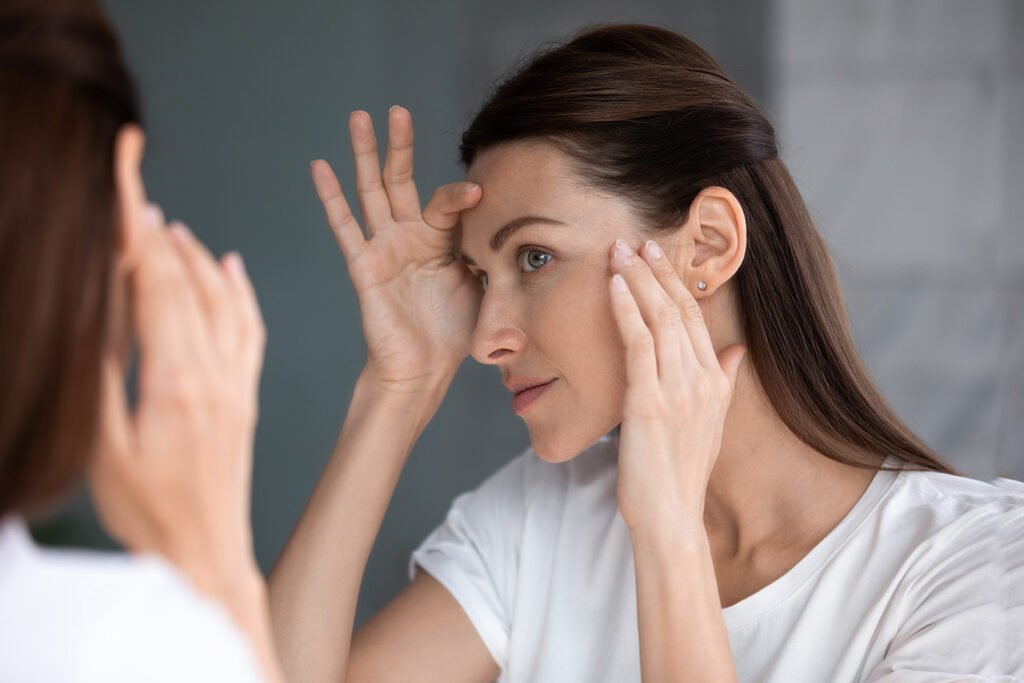Your Guide to Performing a Self-Skin Check

Taking care of your skin goes beyond just washing and moisturizing; it also involves being vigilant about changes that may occur on its surface. Regular self-skin checks are crucial for detecting any abnormalities early on, potentially saving you from more serious health issues down the line. In this guide, we’ll walk you through the steps of performing a self-skin check to ensure you’re keeping tabs on your skin’s health.
Step 1: Set Aside Time
Find a quiet, well-lit area where you can perform your self-skin check without interruptions. Ideally, choose a spot with a full-length mirror and a handheld mirror for better visibility of hard-to-reach areas like your back and scalp.
Step 2: Examine Your Entire Body
Start by examining your body from head to toe. Look for any new moles, freckles, or spots, as well as any changes in existing ones. Pay close attention to areas that are often exposed to the sun, such as your face, neck, arms, and legs. Don’t forget to check less visible areas like your scalp, genitals, and between your toes.
Step 3: Use the ABCDE Rule
When examining moles or spots, use the ABCDE rule to identify any potential warning signs of melanoma, the most serious type of skin cancer:
A – Asymmetry: Check if one half of the mole or spot doesn’t match the other half.
B – Border: Look for irregular, blurry, or jagged edges.
C – Color: Take note of any changes in color, including multiple shades of brown, black, blue, or red.
D – Diameter: Pay attention to any growth in size, especially if the diameter is larger than a pencil eraser (about 6mm).
E – Evolution: Be aware of any changes in size, shape, color, or elevation over time.
Early detection is key to successfully treating many types of cancer. Regular screenings such as mammograms, Pap smears, colonoscopies, and skin exams can detect cancer in its earliest stages when treatment is most effective. It’s essential to prioritize these screenings as recommended by healthcare professionals, especially for individuals with a family history of cancer or other risk factors.
Step 4: Look for Other Warning Signs
In addition to the ABCDE rule, be on the lookout for other warning signs that may indicate skin cancer or other skin conditions, such as:
Persistent itching, tenderness, or pain in a particular area.
Sores that won’t heal, or that heal and then return.
Bleeding or oozing from a mole or spot.
Any new or changing growths on your skin.
Step 5: Take Note of Your Findings
Keep a record of any moles, spots, or abnormalities you find during your self-skin check. Note their location, size, shape, color, and any other relevant details. This information will be valuable for tracking changes over time and discussing them with your healthcare provider if necessary.
Step 6: Follow Up with a Professional
If you notice any concerning changes during your self-skin check, don’t hesitate to schedule an appointment with a dermatologist or healthcare provider. They can perform a thorough examination and determine whether further testing or treatment is needed.
Performing regular self-skin checks is a simple yet essential practice for maintaining your skin health. By following the steps outlined in this guide and staying vigilant about changes in your skin, you can catch potential issues early and take proactive steps to protect yourself against skin cancer and other skin conditions. Remember, when it comes to your skin, early detection can make all the difference.
You can contact Western Maryland Dermatology at (301) 777-7900 or visit us online at https://wmderma.com/contact/.
